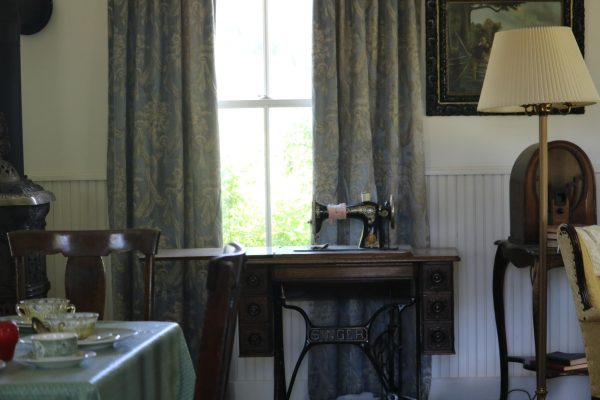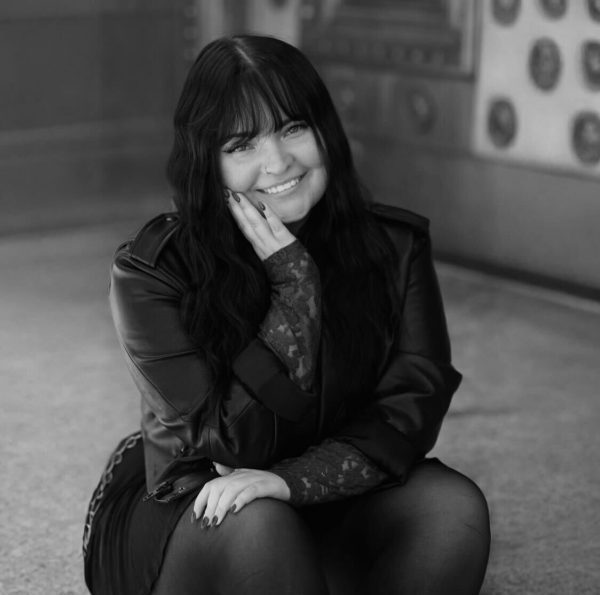This article was originally published in the Welcome Home print issue of The Daily Utah Chronicle, originally in stands on August 25, 2024. It has not been updated and some information may be out of date.
Its name, history and everything else aside from its general description are a mystery. It is simply known as the big white barn on the edge of northern Park City that often sports a large model of the American flag on its side.
Artists, including the oil painter Jan Perkins, who has painted more than 15 renditions of the barn since 2013, have flocked to it with cameras and easels. This has provided its status as one of the most widely painted and photographed structural sites in Utah. However, underneath its photogenic grandeur, there is so much more to know.
MaryKay Williams knows it not just as the big white barn in artwork, but rather, as the McPolin Farm named after her family on whose backs it was built. According to Williams, in 1897, her great-great grandparents Dan and Isabelle McPolin acquired around 160 acres of land from the McLane family and soon after the first pieces of timber fell into place.
The barn was erected by the couple’s four hands over the course of a year using a technique called “joinery,” which fits timber together so tightly that nails are unnecessary. Shortly after the barn’s completion around 1922, Dan and Isabelle’s son, Patrick McPolin, and his wife Grace, inherited the structure and operated it as a dairy farm while living in the farmhouse on the property.

The Handshake
In 1947, D. A. Osguthorpe, a Salt Lake City veterinarian, presented Patrick with an offer to buy the farmstead. Thrilled to see someone taking an interest, Patrick swiftly agreed and sealed the sale with a handshake, “which is a simple gesture to most, but a binding law for him,” Williams said. In the weeks that followed this transaction, the family received a better offer for the land but Patrick was steadfast in his agreement with Osguthorpe.
With Osguthorpe’s help, the farm prospered for a little over a year, however, a mysterious fire caused the small farmhouse where the McPolin family had lived to burn to the ground, sending what was left of their memory up in smoke. It was not rebuilt until the Park City City Council purchased the farm from Osguthorpe in 1990. The farmhouse was re-furnished with furniture donated by MaryKay Williams and her sisters, who are the McPolins’ great-great granddaughters.
The McPolin Barn, as well as the refurbished farmhouse on the grounds, quickly became landmarks of the Park City community and it was not long before they joined the Park City Historical Registry.

The Legacy Continues
The barn’s impressive structure is not the only noteworthy artistic production on the farmstead. Just a few yards away, hidden beneath Highway 224, lies another small wonder. Utah artist Bill Louis captured the farm’s lush backdrop in a mural entitled “Tunnel Vision.” The piece captures the silhouettes of tourists and animals that are surrounded by geometric patterns and vibrant colors that resemble the topography of the barn’s surroundings.
This expressive addition is just one of the ways in which the Friends of the Farm program has aided in the farm’s preservation and improvement since 1990. The program is described by its manager, Paige Galvin, as “a volunteer-based program that focuses on community engagement with the farmstead to ensure that it remains a current figment of city lore.”
The McPolin Farmstead has become a focal point of Utah tourism and has been a notorious spot for University of Utah student graduation pictures. It is featured everywhere, from airports to art galleries around the United States. Its unique architecture and grandiose presence have aided in the barn’s admission into Utah’s carousel of scenes worthy of artistic muse.
Williams vividly described how the McPolin family poured every ounce of their livelihood into that barn.
“Dan and Isabelle McPolin set a legacy in motion when they laid those first logs of timber back in 1922,” Williams said.
Their mission lives on today in the hearts of their great-great-great grandchildren, which is that what lies beneath the big white barn, which is now a symbol of familial prosperity, was once simply, a home.



